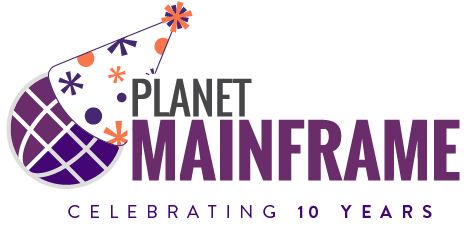Let’s be honest: mainframes are mission-critical but often seen as separate technological islands that can get left out of the observability conversation. Distributed-based, leading observability solutions such as DataDog, Dynatrace, New Relic, Splunk et al. have blazed a trail of comprehensive and innovative capabilities in the meteoric rise of observability tech.
By and large, however, this accelerated change has overlooked the mainframe, rather than embraced it. (And after all, where are many of the most critical IT operations taking place? You know where!)
At SHARE Cleveland 2025, I learned how Broadcom’s WatchTower helps organizations modernize without ripping out their core systems. In fact, it is building upon many mainframe operational tools that customers already use.
Watchtower is focused on making vital operational insight visible, understandable, and manageable in today’s IT landscape.
To be fair, there are other vendors in the market, such as Rocket, BMC, and IBM; WatchTower is not alone in its ambition. But I am not here to offer a comparison or a critique of the supplier market.
Bridging the Organizational Divide
If you’ve spent time herding mainframes, cloud platforms, or hybrid IT environments, you know the pain of alerts flying in from every direction, systems that don’t talk to each other, and dashboards that feel more like puzzles than solutions.
Enter technology such as Broadcom’s WatchTower — a platform quietly making waves in the mainframe observability space. WatchTower brings mainframe telemetry into the same dashboard as cloud and distributed systems so that operations can manage everything cohesively.
Broadcom explicitly aims for WatchTower to be more than just another monitoring tool. Its purpose is to revolutionize understanding, management, and modernization of our systems.
What Is WatchTower?
One of a new wave of vendor investments in the market, WatchTower is Broadcom’s unified observability platform designed for hybrid IT environments. This means it works across cloud, distributed, and, yes, mainframe systems. It pulls telemetry feeds from all corners of the organization’s infrastructure and presents them in one clean, intelligent view.
I’ve been lucky enough to hear directly from the product teams responsible, and as I observed in Broadcom’s recent explanation, the tool enables a variety of users to “see the unseen” by providing insights from systems that were previously opaque, including legacy (or hitherto disparate) mainframe monitoring or performance tools.
Function and Form — Behind the Dashboard
WatchTower’s visual identity is a comprehensive, persona-centric dashboarding facility. But what impresses about WatchTower is the level of rigour behind the scenes. Several capabilities caught my eye:
- Topology Mapping: Automatically visualizes how IT systems are connected.
- Alert Insights: Prioritizes alerts based on impact, not just noise.
- Machine Learning: Uses operational metrics to predict issues before they happen, and suggests fixes.
- Application Profiling: Gives deep visibility into z/OS application performance.
The first time I saw it in action, I noted that WatchTower “turns reactive firefighting into proactive engineering,” a noteworthy operational advantage long overdue in many enterprise IT shops.
Loved by Ops Teams, Targeting SREs
From the briefings I heard, WatchTower is built with Site Reliability Engineering (SRE) principles in mind. It aims to provide holistic support to help teams:
- Track service-level objectives (SLOs)
- Automate incident response
- Collaborate across dev, ops, and business units
Supporting the trend towards SRE management looks like a major step forward for mainframe teams who want to adopt modern, holistic observability practices without losing operational control of their long-standing z/OS environments.
Why It Matters
Strategically, a holistic dashboard on operations is a key part of an organizational operational strategy. Knowledge is power when it comes to monitoring against risk. The tool aims to help operations specialists:
- Reduce downtime by spotting issues early
- Improve performance with real-time insights
- Cut costs by optimizing resource usage
- Boost security through better visibility
I especially like how historical operational data can be fed into the tool to build a baseline of what “normal” looks like, enabling triggers and flags to be set for exceptions and abnormalities. This is a big step towards building organizational truth into the tool’s rules to enable it to react more intelligently to situations as they arise.
“I like how historical operational data can be fed into the tool to build a baseline of what ‘normal’ looks like, enabling triggers and flags to be set for exceptions and abnormalities.”
Looking Ahead
With operational elements such as Linux (IFL), DevOps, and AI, the complexity of mainframe operations continues to increase. Looking ahead, detailed mainframe observability capabilities are a critical part of the organization’s IT strategy.
WatchTower — and other vendor offerings from companies like IBM, BMC, and Rocket Software — will continue evolving toward holistic observability platforms that empower IT teams to be smarter, faster, and better aligned with business goals.









Very nice read. Doing more with less, achieving reliability with ease, that has always been a human ambition. Is it a utopia? Not at all, it is a clear goal. There’s no single easy button to press, but the brilliant minds across mainframe technology are continuously innovating and moving us in the right direction. Yes, many roads lead to Rome, yet with the right companionship and partnerships, the journey itself becomes a joy. 😉